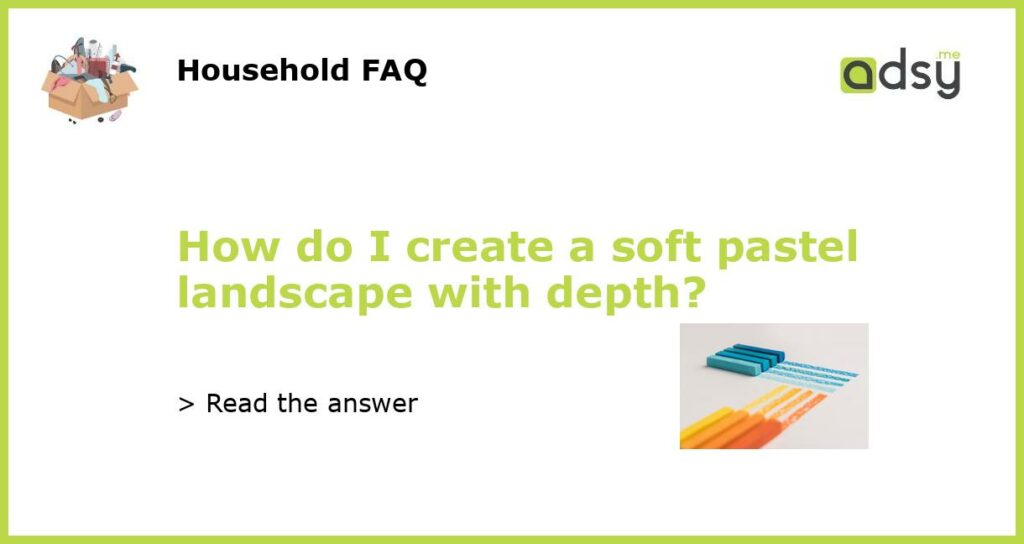Understanding the Soft Pastel Medium
Soft pastel is a versatile and vibrant medium that can be used to create beautiful landscapes with depth. Before diving into creating your soft pastel landscape, it is important to understand the characteristics of the medium. Soft pastels are made of pigment, kaolin clay, and a binder, which allows them to be easily applied and blended on a textured surface. They come in a range of colors and can be layered to create depth and dimension.
Choosing the Right Materials
When creating a soft pastel landscape, it is essential to use the right materials to achieve the desired results. Start with a high-quality set of soft pastels that offers a wide range of colors. Look for pastels that have a soft and creamy consistency, as they are easier to blend and create soft transitions. You will also need a textured pastel paper or board, which will hold the pastel particles and allow for layering and blending.
Additionally, consider using pastel fixative to protect your finished artwork from smudging. It is also helpful to have a range of soft pastel brushes or blending tools, such as blending stumps or tortillons, to create smooth transitions and add detail.
Planning the Composition
Before starting your soft pastel landscape, take some time to plan the composition. Consider the elements you want to include, such as mountains, trees, or bodies of water, and think about how they will be arranged on the paper. Pay attention to the rule of thirds, which suggests dividing your composition into thirds both horizontally and vertically and placing key elements along these lines or at their intersections, creating a more balanced and visually pleasing composition.
Think about the focal point of your landscape and how you can create depth and dimension by using foreground, middle ground, and background elements. Adding elements in different scales and sizes can create a sense of distance and three-dimensionality in your artwork. Sketching a basic outline or thumbnail sketch can be helpful in visualizing your composition before you start applying pastel.
Layering and Blending Techniques
One of the key techniques in creating a soft pastel landscape with depth is layering and blending. Start by applying a light layer of pastel to the paper and gradually build up the colors and values. Use the side of the pastel to create larger areas of color and then use the edge for smaller details and highlights.
Blend the colors together using your fingers, blending tools, or soft pastel brushes. Be gentle and use a light touch to avoid smudging or mixing too much. Work from larger areas to smaller details, constantly stepping back to assess the overall effect and make adjustments. The layering and blending process allows you to create smooth transitions and gradients, adding depth and dimension to your landscape.
Creating Depth with Color and Value
Color and value are essential in creating depth and dimension in a soft pastel landscape. Use a variety of colors to represent different elements of nature, such as green for foliage, blue for water, and brown for earth tones. By using warm and cool colors, you can create contrast and depth in your artwork.
Consider the light source in your composition and use lighter values for areas that are hit directly by light and darker values for areas in shadow. This contrast in value helps to create a sense of depth and three-dimensionality. Experiment with different color combinations and gradations to achieve the desired effect in your landscape.
By following these steps and practicing your technique, you can create a soft pastel landscape with depth that showcases the beauty of the medium and captures the essence of nature.






